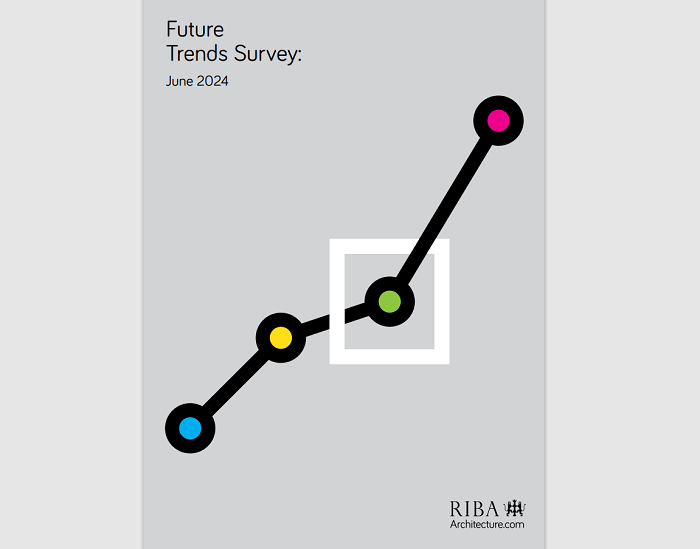The Royal Institute of British Architects (RIBA) has published the findings of its latest Future Trends Survey, a monthly report of business and employment trends affecting the architects’ profession.
The June 2024 findings show that, over the next three months, architects anticipate higher workloads, and, with the RIBA Staffing Index hitting a two-year high, practice staff recruitment is expected to increase. This suggests that practices are preparing for long-term growth.
In June, the RIBA Future Trends Workload Index fell slightly by 2 points to +4, indicating that architects expect workloads to increase overall.
Over the next three months, 23% of practices expect workloads to increase, 19% expect them to decrease, and 58% expect them to stay the same.

The outlook for small practices (1-10 staff) rose by 1 point to a Workload Index figure of +4, after rising above zero for the first time in over a year last month. The outlook for medium (11+ staff) and large (50+ staff) practices remains optimistic at +11, but softened by 19 points compared to last month.
The regional picture also remains broadly positive, although the outlook for London (-3) and Wales and the West (0) fell by 5 and 2 points respectively. The outlook for the North of England (+15) and the South of England (+2) remained positive but fell by 8 and 6 points respectively, while the Midlands and East Anglia (+10) continued to grow in confidence, rising by 10 points.
The outlook among monitored work sectors has improved overall. The outlook for the Commercial sector (+5) strengthened by 1 point, with London and the North of England the most optimistic about commercial work. While still negative, the outlook for the Private Housing sector (-1) improved by 4 points, and the Public sector (-5) held steady. The outlook for the Community sector (-5) fell by 3 points.
In June, the RIBA Future Trends Permanent Staffing Index rose by 6 points to +6, indicating that more practices intend to increase staff numbers than reduce them. This marked improvement is the highest figure in over 2 years, suggesting practices are preparing for long-term growth.
- Over the next three months, 13% of practices expect to employ more permanent staff, 7% expect to employ fewer, and 80% anticipate no change.
- On balance, all practice sizes expect an increase in permanent staffing levels, although this is more common among medium and large practices.
- The regional staffing outlook is positive, with London (Permanent Staffing Index: +5), Wales and the West (+11), the South of England (+7) and the North of England (+3) all optimistic, and only the Midlands and East Anglia (0) expecting no change.
- The Temporary Staffing Index fell by 3 points to -1, suggesting decreasing numbers of temporary staff – perhaps reflecting a move towards recruiting permanent staff.
- Levels of personal underemployment rose slightly from 23% in May to 25% in June.
RIBA Head of Economic Research and Analysis Adrian Malleson said: “The profession’s outlook is positive for a third consecutive month - a welcome recovery after the the negative outlook that characterised the second half of 2023 through to the start of 2024. Nevertheless, the recovery in the architects’ market is tentative, and significant numbers of practices remain pessimistic.
“We are yet to see the effect, if any, of Labour's widely anticipated general election victory – stay tuned for next month’s report.
“Commentary received in June indicates an improving market for some but a mixed picture overall. The general election, while bringing a sense of change, also brought a level of uncertainty.
“While practices continue to report that the planning system is dampening workloads and hampering project delivery, a small number of practices report an improvement in planning application progression.
“Some relay fewer enquiries and downward pressure on public sector work, while others describe a growing order book and steadying private housing workloads.
“We will continue to report our findings to the Government and work with other built environment bodies to monitor these trends.”




















